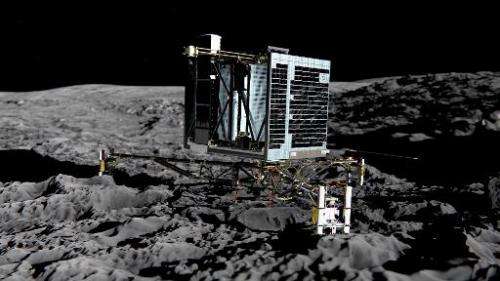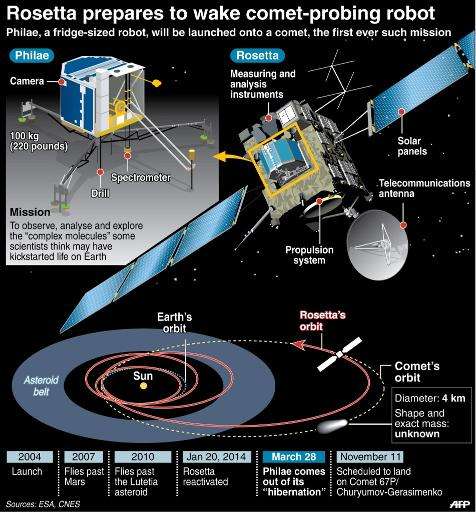Comet lander awakes from long hibernation

European space experts said on Friday they had successfully reawakened a fridge-sized robot designed to make the first-ever spacecraft landing on a comet.
The 100-kilogramme (220-pound) Philae lander was revived after more than three years of deep space hibernation, in a key phase of a billion-dollar mission launched over a decade ago.
France's National Centre for Space Studies (CNES), in Paris, said that the spacecraft had re-established contact with Earth, and that an "initial signal was received at 3.00 pm (1400 GMT) today at mission control in Cologne, Germany".
A Twitter account set up for the robotic lander said: "My controllers say that I am in quite good condition after 39 months of hibernation.
"My new software has uploaded perfectly. I'll be taking a little rest now! Talk to you soon."
The lander is travelling aboard an unmanned probe called Rosetta which will make an historic rendezvous with Comet 67P/Churyumov-Gerasimenko, currently 650 million kilometres (400 million miles) from Earth, this summer.
In November, the Philae lander is due to descend to the comet, anchoring itself before using an array of 10 instruments to probe the surface and analyse its dusty ice.

Comets follow elliptical orbits around the Sun, spewing spectacular tails of gas and dust as close brushes with the star cause their surface ice to evaporate.
Dramatic sightings over the course of human history have given birth to many myths associating these wanderers of the Solar System with great events like famines and wars.
For cosmologists, though, they are balls of ice and dust offering insights into how the Solar System formed 4.5 billion years ago.
Some scientists believe comets may have brought much of the water in today's oceans and possibly the complex molecules that kickstarted life on Earth.
© 2014 AFP





















